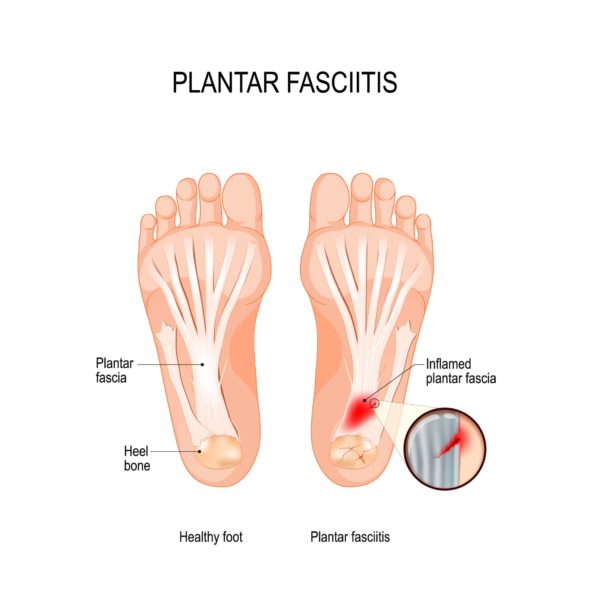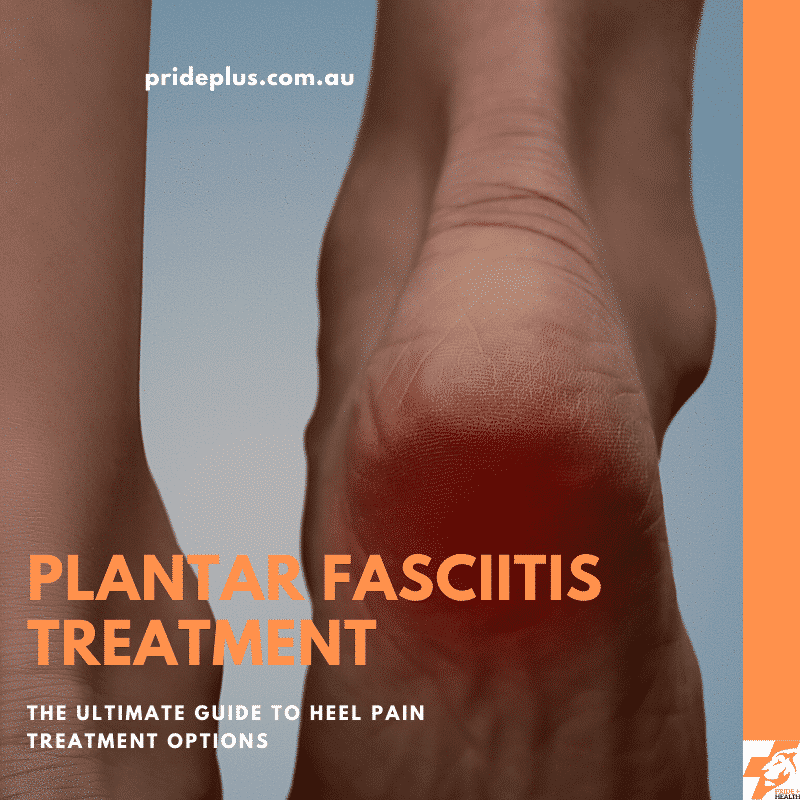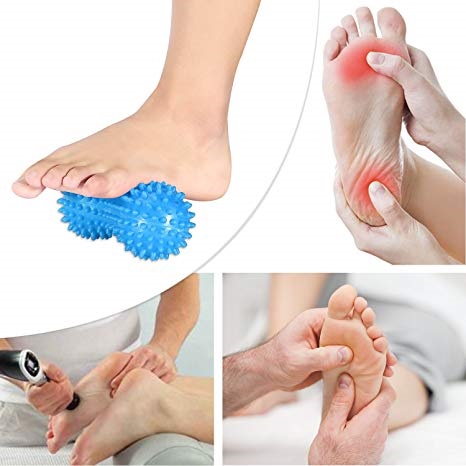Plantar Fasciitis Management : Plantar Fasciitis Symptoms And Treatments Piedmont Healthcare - Exercises for plantar fasciitis, along with shoe inserts, resting, icing,.
Plantar Fasciitis Management : Plantar Fasciitis Symptoms And Treatments Piedmont Healthcare - Exercises for plantar fasciitis, along with shoe inserts, resting, icing,.. The pain typically comes on gradually, and it affects both feet in about. Stretching the arch of your foot and your heel cord (achilles tendon) is the most effective way to relieve the pain that comes with the condition. Plantar fasciitis pain management for plantar fasciitis. Treatments are largely noninvasive and efficacious. Management of plantar fasciitis includes:
Usually, plantar fasciitis can be treated successfully by tailoring treatment to an individual's risk factors and preferences. Plantar fasciitis, a chronic degenerative process that causes medial plantar heel pain, is responsible for approximately 1 million physician visits each year. Webmd offers 15 tips to prevent and relieve pain caused by plantar fasciitis. Patients not experiencing relief after a prolonged period of conservative management are candidates for surgical treatment. A cochrane systematic review (search date:

Plantar fasciitis is an extremely common cause of heel pain.
Plantar fasciitis pain management for plantar fasciitis. Plantar fasciitis involves inflammation of the plantar fascia, which is a fibrous tissue that provides support to the arch of the foot. Plantar fasciitis is a very common cause of inferior heel pain that can be triggered and aggravated by prolonged standing, walking, running and obesity, among other factors. Plantar fasciitis is a disorder of the connective tissue which supports the arch of the foot. If your first steps in the morning cause a stabbing pain in your heel, you may have plantar fasciitis. With overuse, the plantar fascia loses some of its normal elasticity, which can result in the painful. Close attention must be paid during. Reassurance that most people with plantar fasciitis will make a complete recovery within 1 year. Plantar fasciitis is aggravated by tight muscles in your feet and calves. Learn more about the symptoms and treatment of plantar fasciitis at. March 2017) assessed the effects (benefits and harms) of injected corticosteroids for treating plantar heel pain in adults david, 2017 . Exercises for plantar fasciitis, along with shoe inserts, resting, icing,. Nevertheless, plantar fasciitis is the most common cause of heel.
Symptoms of plantar fasciitis include tenderness noted at the anteromedial calcaneal margin and tightness of the achilles tendon, with burning pain at the anteromedial aspect of the heel. Plantar fasciitis pain can often be managed at home with simple remedies. There is limited evidence supporting the efficacy of osteopathic manipulative treatment for patients with plantar fasciitis. If your first steps in the morning cause a stabbing pain in your heel, you may have plantar fasciitis. Difficult cases may be referred for physiotherapy.

If your first steps in the morning cause a stabbing pain in your heel, you may have plantar fasciitis.
Physiotherapy includes myofascial release and scar tissue breakdown of the plantar fascia, and supervised stretching. The pain typically comes on gradually, and it affects both feet in about. Symptoms of plantar fasciitis include tenderness noted at the anteromedial calcaneal margin and tightness of the achilles tendon, with burning pain at the anteromedial aspect of the heel. Various terms have been used to describe plantar fasciitis, including jogger's heel, tennis heel, policeman's … There is limited evidence supporting the efficacy of osteopathic manipulative treatment for patients with plantar fasciitis. Plantar fasciitis involves inflammation of the plantar fascia, which is a fibrous tissue that provides support to the arch of the foot. March 2017) assessed the effects (benefits and harms) of injected corticosteroids for treating plantar heel pain in adults david, 2017 . Plantar fasciitis is the most common cause of heel pain in adults, consisting of 11% to 15% of foot symptoms requiring professional care. Surgical management is done rarely to treat plantar fasciitis. Plantar fasciitis is most common between the ages of 40 and 60. Webmd offers 15 tips to prevent and relieve pain caused by plantar fasciitis. Plantar fasciitis is aggravated by tight muscles in your feet and calves. Pain relievers such as ibuprofen (advil, motrin ib, others) and naproxen sodium (aleve) may ease the pain and inflammation caused by plantar fasciitis.
The classic symptom is poststatic dyskinesia, or pain upon first arising from a night's sleep or after travel. Approach considerations understanding the etiology of the problem and directing treatment accordingly is the key to successful treatment of plantar fasciitis. The surgical treatment consists of the release of the gastrocnemius muscle to reduce the tightness of the calf muscles. The pain typically comes on gradually, and it affects both feet in about. Plantar fasciitis, a chronic degenerative process that causes medial plantar heel pain, is responsible for approximately 1 million physician visits each year.

Heel spur pain is a result of plantar fasciitis, but performing exercises that target this area can help relieve the pain.
Treatments are largely noninvasive and efficacious. After concentrating a stream of laser energy on the heel, the machine creates a photochemical reaction that enables greater mobility in the joint while minimizing pain and inflammation. Plantar fasciitis is a very common cause of inferior heel pain that can be triggered and aggravated by prolonged standing, walking, running and obesity, among other factors. Mauro, md, dabpm and leonard goldstein, dds, phd plantar fasciitis is one of the most common causes of foot and heel pain in adults. Plantar fasciitis pain management for plantar fasciitis. Heel spur pain is a result of plantar fasciitis, but performing exercises that target this area can help relieve the pain. Stretching the arch of your foot and your heel cord (achilles tendon) is the most effective way to relieve the pain that comes with the condition. Diagnosis and management applying an osteopathic approach. Plantar fasciitis is the most common cause of heel pain in adults, consisting of 11% to 15% of foot symptoms requiring professional care. Webmd offers 15 tips to prevent and relieve pain caused by plantar fasciitis. The surgical treatment consists of the release of the gastrocnemius muscle to reduce the tightness of the calf muscles. Pain is also frequently brought on by bending the foot and toes up towards the shin. Plantar fasciitis is a common cause of heel pain in adults.
March 2017) assessed the effects (benefits and harms) of injected corticosteroids for treating plantar heel pain in adults david, 2017 . Plantar fasciitis, a chronic degenerative process that causes medial plantar heel pain, is responsible for approximately 1 million physician visits each year. Diagnosis and management applying an osteopathic approach. Individuals with plantar fasciitis experience pain that is most intense during their first few steps of the day or after prolonged standing. Pain relievers such as ibuprofen (advil, motrin ib, others) and naproxen sodium (aleve) may ease the pain and inflammation caused by plantar fasciitis.

Pain relievers such as ibuprofen (advil, motrin ib, others) and naproxen sodium (aleve) may ease the pain and inflammation caused by plantar fasciitis.
How is plantar fasciitis treated? Plantar fasciitis is aggravated by tight muscles in your feet and calves. 15 nonoperative management initially consists of activity modification, ice massage,. The surgical treatment consists of the release of the gastrocnemius muscle to reduce the tightness of the calf muscles. Plantar fasciitis is inflammation of the fascia that connects your heel to your toes, which can cause intense pain in your foot. A cochrane systematic review (search date: Management of plantar fasciitis plantar fasciitis is the pain caused by degenerative irritation at the insertion of the plantar fascia on the medial process of the calcaneal tuberosity. Learn more about the symptoms and treatment of plantar fasciitis at. The classic symptom is poststatic dyskinesia, or pain upon first arising from a night's sleep or after travel. Reassurance that most people with plantar fasciitis will make a complete recovery within 1 year. There is limited evidence supporting the efficacy of osteopathic manipulative treatment for patients with plantar fasciitis. Immediate management initial treatment includes gentle stretching of the achilles tendon and plantar fascia, weight loss, taping, arch support and heel lifts. Plantar fasciitis pain can often be managed at home with simple remedies.
Management of plantar fasciitis includes: Enthesopathy of the plantar aponeurosis, otherwise known as plantar fasciitis, is one of the most common causes of foot pain presenting to the family practitioner, podiatrist, and orthopedist. Immediate management initial treatment includes gentle stretching of the achilles tendon and plantar fascia, weight loss, taping, arch support and heel lifts. The classic symptom is poststatic dyskinesia, or pain upon first arising from a night's sleep or after travel. Reassurance that most people with plantar fasciitis will make a complete recovery within 1 year.

Plantar fasciitis pain management for plantar fasciitis.
Plantar fasciitis is aggravated by tight muscles in your feet and calves. Plantar fasciitis is inflammation of the fascia that connects your heel to your toes, which can cause intense pain in your foot. Difficult cases may be referred for physiotherapy. Approximately 80% of patients with plantar fasciitis improve within 12 months with nonoperative therapy. Management of plantar fasciitis includes: The pain typically comes on gradually, and it affects both feet in about. Pain is also frequently brought on by bending the foot and toes up towards the shin. Stretching the arch of your foot and your heel cord (achilles tendon) is the most effective way to relieve the pain that comes with the condition. Management of plantar fasciitis plantar fasciitis is the pain caused by degenerative irritation at the insertion of the plantar fascia on the medial process of the calcaneal tuberosity. Learn more about the symptoms and treatment of plantar fasciitis at. Plantar fasciitis pain management for plantar fasciitis. Heel spur pain is a result of plantar fasciitis, but performing exercises that target this area can help relieve the pain. Immediate management initial treatment includes gentle stretching of the achilles tendon and plantar fascia, weight loss, taping, arch support and heel lifts.
Plantar fasciitis is an extremely common cause of heel pain. Surgical management is done rarely to treat plantar fasciitis. Immediate management initial treatment includes gentle stretching of the achilles tendon and plantar fascia, weight loss, taping, arch support and heel lifts. 15 nonoperative management initially consists of activity modification, ice massage,. Plantar fasciitis pain management for plantar fasciitis.

Reassurance that most people with plantar fasciitis will make a complete recovery within 1 year.
Plantar fasciitis is a common cause of heel pain in adults. Individuals with plantar fasciitis experience pain that is most intense during their first few steps of the day or after prolonged standing. Approach considerations understanding the etiology of the problem and directing treatment accordingly is the key to successful treatment of plantar fasciitis. Exercises for plantar fasciitis, along with shoe inserts, resting, icing,. With overuse, the plantar fascia loses some of its normal elasticity, which can result in the painful. A cochrane systematic review (search date: Management of plantar fasciitis plantar fasciitis is the pain caused by degenerative irritation at the insertion of the plantar fascia on the medial process of the calcaneal tuberosity. Enthesopathy of the plantar aponeurosis, otherwise known as plantar fasciitis, is one of the most common causes of foot pain presenting to the family practitioner, podiatrist, and orthopedist. Plantar fasciitis pain can often be managed at home with simple remedies. Plantar fasciitis is a very common cause of inferior heel pain that can be triggered and aggravated by prolonged standing, walking, running and obesity, among other factors. Plantar fasciitis involves inflammation of the plantar fascia, which is a fibrous tissue that provides support to the arch of the foot. March 2017) assessed the effects (benefits and harms) of injected corticosteroids for treating plantar heel pain in adults david, 2017 . Usually, plantar fasciitis can be treated successfully by tailoring treatment to an individual's risk factors and preferences.
Heel spur pain is a result of plantar fasciitis, but performing exercises that target this area can help relieve the pain. Nevertheless, plantar fasciitis is the most common cause of heel. Approach considerations understanding the etiology of the problem and directing treatment accordingly is the key to successful treatment of plantar fasciitis. Management of plantar fasciitis plantar fasciitis is the pain caused by degenerative irritation at the insertion of the plantar fascia on the medial process of the calcaneal tuberosity. Plantar fasciitis is an extremely common cause of heel pain.

Usually, plantar fasciitis can be treated successfully by tailoring treatment to an individual's risk factors and preferences.
Plantar fasciitis is aggravated by tight muscles in your feet and calves. With overuse, the plantar fascia loses some of its normal elasticity, which can result in the painful. It results in pain in the heel and bottom of the foot that is usually most severe with the first steps of the day or following a period of rest. Nevertheless, plantar fasciitis is the most common cause of heel. After concentrating a stream of laser energy on the heel, the machine creates a photochemical reaction that enables greater mobility in the joint while minimizing pain and inflammation. Plantar fasciitis is a very common cause of inferior heel pain that can be triggered and aggravated by prolonged standing, walking, running and obesity, among other factors. Plantar fasciitis, a chronic degenerative process that causes medial plantar heel pain, is responsible for approximately 1 million physician visits each year. Plantar fasciitis is a common cause of heel pain in adults. The surgical treatment consists of the release of the gastrocnemius muscle to reduce the tightness of the calf muscles. How is plantar fasciitis treated? Plantar fasciitis is an extremely common cause of heel pain. 15 nonoperative management initially consists of activity modification, ice massage,. Exercises for plantar fasciitis, along with shoe inserts, resting, icing,.
Comments
Post a Comment